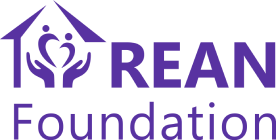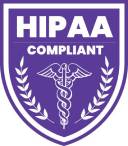
Recognizing Symptoms of Nutrient Deficiencies in Humans
Is your hair lacking its usual luster and fullness? Do you experience tingling sensations in your fingers or toes? These subtle changes might indicate more than temporary concerns. Wondering why your nails develop spoon-like shapes or mysterious white lines? These could be your body signaling nutrient deficiencies through keratin structures and nerve responses. Patient support platforms like REAN HealthGuru help identify these early warning signs through personalized health monitoring.
Nutrient deficiencies don't announce themselves with dramatic flair—they whisper through brittle follicles of hair, tingling extremities, and nail bed abnormalities before escalating. When ignored, these early symptoms of nutrient deficiency in humans can cascade into significant health impacts. Iron deficiency might progress from fatigue to anemia, while inadequate B vitamins could evolve from mouth ulcers to neurological complications. Even common issues like frequent infections or slow wound healing often trace back to nutritional gaps undermining immune function.
This article examines key indicators of nutritional shortages, explores their root causes, and provides practical strategies for maintaining dietary balance.
Common Physical Signs of Nutrient Deficiency
- Hair fall/hair loss: While shedding 50–100 hair strands daily is normal, excessive clumping could indicate nutritional gaps. The hair follicles—among the body's most active structures—require zinc, iron, selenium, fatty acids etc, to maintain healthy growth patterns. When these nutrients dwindle, your locks often sound the first alarm.
- Bleeding gums and vision changes: Moving beyond hair concerns, unexplained gum bleeding despite good oral hygiene might surprise you as a vitamin C red flag. This essential nutrient fuels collagen production—the cellular glue maintaining skin integrity, bone strength, and connective tissue resilience. Similarly, night vision struggles could reveal vitamin A shortages, a deficiency affecting over half of adults according to nutritional research.
- Muscle cramps and bone pain: Your body speaks through muscle cramps, too, particularly sleep-disrupting ones hinting at potassium or hydration imbalances. Those mysterious "growing pains" in adulthood? They might actually reflect vitamin D deficiencies, weakening bone structure through demineralization.
- Nail changes: Ridged or spoon-shaped nails often outpace brittleness as diet-quality indicators.
- Skin signals: Persistent dryness/cracking suggests B vitamin shortages, while scaly patches may indicate zinc/omega-3 deficits.
- Subtle warnings: Pinpoint red spots (petechiae) could signal vitamin C/K gaps, and slow-healing wounds often trace to zinc/vitamin C shortages.
While these visible signs offer clues, nutrient deficiencies can also manifest in less obvious ways, affecting neurological and systemic functions, which we will explore next.
Neurological and Systemic Signs of Nutrient Deficiencies
Experiencing a burning or tingling sensation in your fingers or toes? This could be an early indicator of a nutrient shortfall, specifically vitamin B12 deficiency. Your body utilizes this crucial nutrient for two vital functions: producing RBC (red blood cells) and maintaining healthy nerve function.
When left unaddressed, vitamin B12 deficiency can progress to permanent neurological damage, depression, and significant memory loss. Another warning sign manifests as persistent pins-and-needles sensations in your limbs—often linked to deficiencies in both thiamine and vitamin B12.
Memory impairment and dementia risk increase when vitamin B12 and niacin levels drop dangerously low. Loss of balance (medically termed ataxia) frequently accompanies these cognitive changes, serving as another neurological red flag for B12 insufficiency.
Beyond nerve-related symptoms, systemic issues like unexplained fatigue and diminished motivation might signal vitamin D deficiency. These energy-sapping effects often compound when combined with magnesium shortages that trigger migraines, muscle cramps, and heart palpitations.
Recognizing these symptoms of nutrient deficiency in humans proves crucial for preventing long-term health complications. While these warning signs can affect anyone, their impact intensifies significantly for those in physically demanding occupations—a connection we'll explore next.
Also Read: Most Common Nutrient Deficiencies in Older Adults
Addressing Nutrient Deficiencies in Physically Demanding Roles
Individuals in physically demanding jobs often face unique challenges maintaining energy and physical resilience—it's the one thing all workers (especially in trades and manual labor) rely on daily. Nutrient deficiencies can exacerbate these issues, manifesting through subtle yet critical symptoms that demand attention.
Persistent muscle soreness and joint pain serve as tell-tale signs of mineral shortages. Magnesium deficiency, for instance, frequently causes cramps and stiffness after heavy lifting or prolonged activity. Similarly, calcium and vitamin D deficiencies weaken bone density and muscle function, increasing injury risks during repetitive tasks. Those experiencing these symptoms of nutrient deficiency in humans should note how physical stress accelerates mineral depletion through sweat and metabolic demands.
Work-related fatigue presents another red flag:
- Iron and B12 deficiencies disrupt oxygen transport and red blood cell production, leaving workers breathless during exertion.
- Zinc's role in immune function becomes crucial when recovery times lengthen unexpectedly—a common complaint among those ignoring their nutritional needs.
- Even visible changes matter. Rough, dry skin from vitamin C shortages and brittle nails signaling biotin gaps often get dismissed as occupational hazards rather than nutritional warnings.
- Underlying causes typically include grab-and-go processed food habits and insufficient intake of nutrient-dense foods like leafy greens, nuts, and fatty fish.
Practical solutions for busy professionals include:
- Carrying electrolyte-rich drinks to replenish magnesium and potassium lost through sweat.
- Prepping protein-packed meals with iron-rich lentils and spinach for sustained energy.
- Using multivitamin tablets to fill dietary gaps during hectic shifts.
By recognizing these signs of nutrient deficiency and implementing simple adjustments, workers can enhance physical resilience and reduce injury risks. Addressing these immediate concerns forms the foundation for long-term wellness—a crucial step we'll build upon in our next section exploring sustainable health strategies.
Long-Term Strategies and Proactive Nutrient Management
Understanding the symptoms of nutrient deficiency in humans forms the foundation for lasting health solutions. Begin by building meals around nutrient-dense foods like:
- Colorful fruits and vegetables for vitamin diversity.
- Whole grains for sustained energy release.
- Lean proteins for tissue repair support.
- Healthy fats for nutrient absorption enhancement.
When dietary changes prove insufficient, healthcare professionals may recommend targeted supplements like iron tablets or omega-3 capsules. However, these should never replace whole foods—think of them as temporary supports while addressing root causes through nutrition.
Lifestyle choices significantly impact nutrient levels. Did you know that smoking depletes vitamin C reserves by a significant amount? Similarly, excessive alcohol consumption hinders B vitamin absorption. Pair these changes with regular physical activity—even brisk walking improves circulation and nutrient delivery to cells.
Periodic health evaluations act as your nutritional safety net. Doctors typically recommend:
- Annual blood tests for tracking iron and vitamin D levels.
- Dietary assessment every 6–12 months.
- Bone density scans for at-risk individuals.
Confirming deficiencies requires medical expertise—self-diagnosis often leads to mismanagement. Through consistent checkups and adjusted eating patterns, you create sustainable defenses against nutritional gaps. This proactive approach not only addresses current symptoms but also builds resilience against future health challenges.
Empower Health Through Nutritional Awareness
Identifying signs of nutrient deficiency becomes your body's essential feedback system—be it through brittle nails, persistent fatigue/exhaustion, or neurological changes. By understanding these signals, you can take charge through dietary changes and lifestyle adjustments that address deficiencies at their root.
When combined with regular medical checkups and professional guidance, simple interventions like balanced meal planning and targeted supplementation prevent most complications. For those unsure where to begin, REAN Foundation's HealthGuru platform offers personalized support globally—start your journey to better health by consulting our experts for vitamin assessments and sustainable nutrition strategies.
Is your hair lacking its usual luster and fullness? Do you experience tingling sensations in your fingers or toes? These subtle changes might indicate more than temporary concerns. Wondering why your nails develop spoon-like shapes or mysterious white lines? These could be your body signaling nutrient deficiencies through keratin structures and nerve responses. Patient support platforms like REAN HealthGuru help identify these early warning signs through personalized health monitoring.
Nutrient deficiencies don't announce themselves with dramatic flair—they whisper through brittle follicles of hair, tingling extremities, and nail bed abnormalities before escalating. When ignored, these early symptoms of nutrient deficiency in humans can cascade into significant health impacts. Iron deficiency might progress from fatigue to anemia, while inadequate B vitamins could evolve from mouth ulcers to neurological complications. Even common issues like frequent infections or slow wound healing often trace back to nutritional gaps undermining immune function.
This article examines key indicators of nutritional shortages, explores their root causes, and provides practical strategies for maintaining dietary balance.
Common Physical Signs of Nutrient Deficiency
- Hair fall/hair loss: While shedding 50–100 hair strands daily is normal, excessive clumping could indicate nutritional gaps. The hair follicles—among the body's most active structures—require zinc, iron, selenium, fatty acids etc, to maintain healthy growth patterns. When these nutrients dwindle, your locks often sound the first alarm.
- Bleeding gums and vision changes: Moving beyond hair concerns, unexplained gum bleeding despite good oral hygiene might surprise you as a vitamin C red flag. This essential nutrient fuels collagen production—the cellular glue maintaining skin integrity, bone strength, and connective tissue resilience. Similarly, night vision struggles could reveal vitamin A shortages, a deficiency affecting over half of adults according to nutritional research.
- Muscle cramps and bone pain: Your body speaks through muscle cramps, too, particularly sleep-disrupting ones hinting at potassium or hydration imbalances. Those mysterious "growing pains" in adulthood? They might actually reflect vitamin D deficiencies, weakening bone structure through demineralization.
- Nail changes: Ridged or spoon-shaped nails often outpace brittleness as diet-quality indicators.
- Skin signals: Persistent dryness/cracking suggests B vitamin shortages, while scaly patches may indicate zinc/omega-3 deficits.
- Subtle warnings: Pinpoint red spots (petechiae) could signal vitamin C/K gaps, and slow-healing wounds often trace to zinc/vitamin C shortages.
While these visible signs offer clues, nutrient deficiencies can also manifest in less obvious ways, affecting neurological and systemic functions, which we will explore next.
Neurological and Systemic Signs of Nutrient Deficiencies
Experiencing a burning or tingling sensation in your fingers or toes? This could be an early indicator of a nutrient shortfall, specifically vitamin B12 deficiency. Your body utilizes this crucial nutrient for two vital functions: producing RBC (red blood cells) and maintaining healthy nerve function.
When left unaddressed, vitamin B12 deficiency can progress to permanent neurological damage, depression, and significant memory loss. Another warning sign manifests as persistent pins-and-needles sensations in your limbs—often linked to deficiencies in both thiamine and vitamin B12.
Memory impairment and dementia risk increase when vitamin B12 and niacin levels drop dangerously low. Loss of balance (medically termed ataxia) frequently accompanies these cognitive changes, serving as another neurological red flag for B12 insufficiency.
Beyond nerve-related symptoms, systemic issues like unexplained fatigue and diminished motivation might signal vitamin D deficiency. These energy-sapping effects often compound when combined with magnesium shortages that trigger migraines, muscle cramps, and heart palpitations.
Recognizing these symptoms of nutrient deficiency in humans proves crucial for preventing long-term health complications. While these warning signs can affect anyone, their impact intensifies significantly for those in physically demanding occupations—a connection we'll explore next.
Also Read: Most Common Nutrient Deficiencies in Older Adults
Addressing Nutrient Deficiencies in Physically Demanding Roles
Individuals in physically demanding jobs often face unique challenges maintaining energy and physical resilience—it's the one thing all workers (especially in trades and manual labor) rely on daily. Nutrient deficiencies can exacerbate these issues, manifesting through subtle yet critical symptoms that demand attention.
Persistent muscle soreness and joint pain serve as tell-tale signs of mineral shortages. Magnesium deficiency, for instance, frequently causes cramps and stiffness after heavy lifting or prolonged activity. Similarly, calcium and vitamin D deficiencies weaken bone density and muscle function, increasing injury risks during repetitive tasks. Those experiencing these symptoms of nutrient deficiency in humans should note how physical stress accelerates mineral depletion through sweat and metabolic demands.
Work-related fatigue presents another red flag:
- Iron and B12 deficiencies disrupt oxygen transport and red blood cell production, leaving workers breathless during exertion.
- Zinc's role in immune function becomes crucial when recovery times lengthen unexpectedly—a common complaint among those ignoring their nutritional needs.
- Even visible changes matter. Rough, dry skin from vitamin C shortages and brittle nails signaling biotin gaps often get dismissed as occupational hazards rather than nutritional warnings.
- Underlying causes typically include grab-and-go processed food habits and insufficient intake of nutrient-dense foods like leafy greens, nuts, and fatty fish.
Practical solutions for busy professionals include:
- Carrying electrolyte-rich drinks to replenish magnesium and potassium lost through sweat.
- Prepping protein-packed meals with iron-rich lentils and spinach for sustained energy.
- Using multivitamin tablets to fill dietary gaps during hectic shifts.
By recognizing these signs of nutrient deficiency and implementing simple adjustments, workers can enhance physical resilience and reduce injury risks. Addressing these immediate concerns forms the foundation for long-term wellness—a crucial step we'll build upon in our next section exploring sustainable health strategies.
Long-Term Strategies and Proactive Nutrient Management
Understanding the symptoms of nutrient deficiency in humans forms the foundation for lasting health solutions. Begin by building meals around nutrient-dense foods like:
- Colorful fruits and vegetables for vitamin diversity.
- Whole grains for sustained energy release.
- Lean proteins for tissue repair support.
- Healthy fats for nutrient absorption enhancement.
When dietary changes prove insufficient, healthcare professionals may recommend targeted supplements like iron tablets or omega-3 capsules. However, these should never replace whole foods—think of them as temporary supports while addressing root causes through nutrition.
Lifestyle choices significantly impact nutrient levels. Did you know that smoking depletes vitamin C reserves by a significant amount? Similarly, excessive alcohol consumption hinders B vitamin absorption. Pair these changes with regular physical activity—even brisk walking improves circulation and nutrient delivery to cells.
Periodic health evaluations act as your nutritional safety net. Doctors typically recommend:
- Annual blood tests for tracking iron and vitamin D levels.
- Dietary assessment every 6–12 months.
- Bone density scans for at-risk individuals.
Confirming deficiencies requires medical expertise—self-diagnosis often leads to mismanagement. Through consistent checkups and adjusted eating patterns, you create sustainable defenses against nutritional gaps. This proactive approach not only addresses current symptoms but also builds resilience against future health challenges.
Empower Health Through Nutritional Awareness
Identifying signs of nutrient deficiency becomes your body's essential feedback system—be it through brittle nails, persistent fatigue/exhaustion, or neurological changes. By understanding these signals, you can take charge through dietary changes and lifestyle adjustments that address deficiencies at their root.
When combined with regular medical checkups and professional guidance, simple interventions like balanced meal planning and targeted supplementation prevent most complications. For those unsure where to begin, REAN Foundation's HealthGuru platform offers personalized support globally—start your journey to better health by consulting our experts for vitamin assessments and sustainable nutrition strategies.



